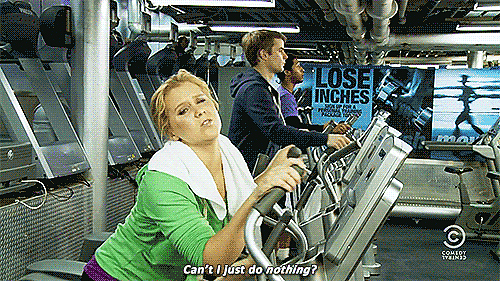As the temperature drops and the days get shorter, you might find yourself feeling a bit more downtrodden than usual-- maybe you’re especially tired or lonely. Perhaps you’ve put on a little weight. These are common symptoms of Seasonal Affective Disorder, or (more appropriately) SAD. WebMD states that SAD is common in women, individuals between 15 and 55 years old, and individuals who live far from the equator. Unfortunately, many of those criteria apply to students at Big 10 schools like the University of Minnesota, so SAD is a real hurdle that many of us will have to jump in the coming winter months.
The good news is, you don’t have to suffer through it untreated or unsupported. Here’s a list of both little and big things you can do to beat your seasonal depression:
1. Take a vitamin supplement.
Vitamin D kicks my SAD’s ass every. Single. Year. Because the main way to get vitamin d is through direct exposure to sunlight, it’s awfully hard to get your daily intake when it’s dark out by the time you’re done with classes. And even if we have a rare sunny day, who wants to lay on the quad and bask in the afternoon light when it’s 20 freaking degrees out? I was skeptical when I started taking vitamin d, but the results the internet guaranteed were almost instantaneous—my energy levels shot up, going to class no longer felt impossible, and I didn’t feed the need to isolate. Vitamin D can be found at at any local drugstore and on Amazon for just over 10 bucks. This one’s a no-brainer.
2. Exercise.
Yes, if you’re not one of those crazy people who work out 7 days a week without complaint, going to the gym may sound like torture. But, like it or not, exercise boosts endorphin levels in your brain, which in turn helps to stabilize your mood. And you don’t even have to go to the gym if that’s not your jam-—there are a million ways to get exercise. For those who detest rec center atmosphere or hate group fitness, I recommend Blogilates. Not only does the Youtube channel include workouts for all fitness levels, instructor Cassey Ho’s bubbly personality will literally give you a mood boost on its own.
3. Practice mindful meditation.
Meditation is a loaded term, bringing up imagery of Buddhist monks sitting still and quiet for hours, their minds so blank they wouldn’t even remember they have three papers and two tests plus a group project—y’know, if that was something monks did. But mindfulness is more about observing the thoughts you do have from a neutral perspective, letting them come and go without judgement. Whether you’re feeling hopeless or anxious, mindfulness exercises can bring you out of your emotionally intense state of mind. Like physical exercise, mindfulness practices are all your own. My personal favorite is easy: close your eyes and take 5 deep, slow breaths, focusing on the sounds around you and feeling the ground under your feet. What are you feeling physically? What are you feeling emotionally? Observe your feelings and surroundings, and when you exhale your fifth breath, I promise you’ll return to your day feeling a little better than before.
4. Avoid isolating.
Sometimes when you’re sad, all you want to do is curl up in bed with pasta and Netflix and shut the world out. It feels so much easier than forcing a smile around your friends (who, keep in mind, are probably feeling a little down too). When you feel that urge to isolate, act opposite to your feeling. Make plans with a friend to study, have dinner with your roommate, call your mom. You don’t have to talk about feeling depressed if you don’t want to, but simple human conversation can boost your mood like nothing else.
Seasonal Affective Disorder sucks. No yoga class or superfood or gallon of water is going to make it go away, no matter what your dumb friend Becky says. Thankfully, these 4 steps can make the days a little easier, even if those days are only 5 hours long.























